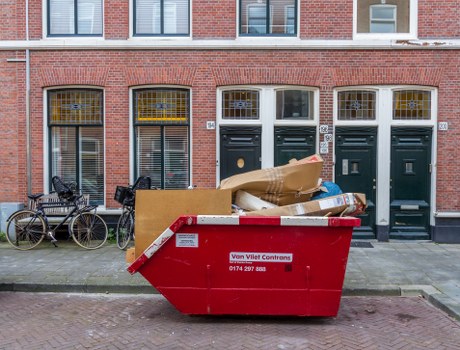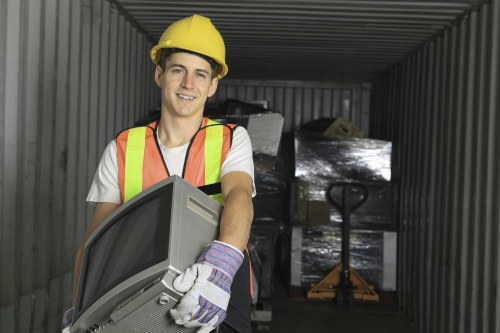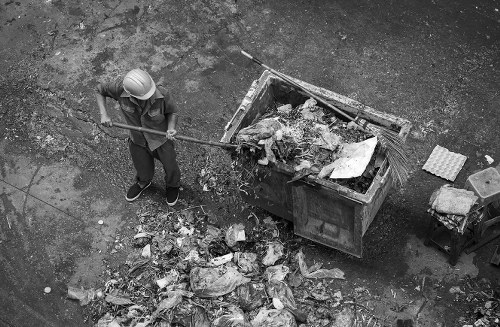Builders Waste Clearance in Council Waste Collection

In the construction industry, managing waste is a critical aspect that ensures projects are completed efficiently and responsibly. **Builders waste clearance** plays a pivotal role in maintaining cleanliness and adhering to environmental standards. Proper waste management not only complies with local regulations but also promotes sustainability and safety on construction sites.
Effective waste clearance involves the removal of various materials such as concrete, wood, metals, and packaging from building sites. These materials, if not handled correctly, can pose significant environmental hazards and safety risks. By implementing a structured waste clearance system, builders can minimize their ecological footprint and maintain orderly workspaces.
Council waste collection services are instrumental in facilitating builders waste clearance. These services offer comprehensive solutions tailored to the unique needs of construction projects. From regular pickups to specialized disposal of hazardous materials, councils provide the necessary infrastructure and support to ensure waste is managed responsibly.

The Importance of Builders Waste Clearance
Managing waste effectively is not just a regulatory requirement but also a reflection of a builder’s commitment to environmental stewardship. Proper waste clearance contributes to:
- Environmental Protection: Reducing the amount of waste sent to landfills minimizes environmental degradation.
- Health and Safety: Clean sites are safer for workers, reducing the risk of accidents and ensuring a healthier workspace.
- Cost Efficiency: Efficient waste management can lead to cost savings by optimizing disposal processes and reducing material wastage.
Moreover, responsible waste clearance enhances a builder’s reputation, making them more attractive to clients who prioritize sustainability. It also ensures compliance with local laws, avoiding potential fines and legal issues.

Council Waste Collection Services
Types of Waste Collected
Council waste collection services typically handle a wide range of materials generated from construction activities. These include:
- Construction Debris: Includes leftover materials like bricks, tiles, and insulation.
- Wood and Timber: Recyclable wood products can be repurposed or processed for energy recovery.
- Metals: Ferrous and non-ferrous metals are valuable for recycling and can be sold to scrap dealers.
- Hazardous Materials: Items like asbestos, paints, and solvents require special handling and disposal.
Understanding the types of waste collected helps builders plan their waste disposal strategies effectively, ensuring that each material is handled appropriately.

Steps for Efficient Builders Waste Clearance
1. Waste Assessment
Before commencing any construction project, conduct a thorough waste assessment to estimate the volume and types of waste that will be generated. This assessment aids in planning the necessary resources and disposal methods.
2. Segregation of Waste
Segregate waste at the source to facilitate effective recycling and disposal. Separate materials such as wood, metals, and hazardous waste to streamline the clearance process.
3. Choosing the Right Disposal Methods
Select appropriate disposal methods based on the type of waste. Utilize recycling facilities for recyclable materials and licensed disposal sites for hazardous waste to ensure compliance with regulations.

Benefits of Using Council Waste Collection for Builders
Compliance with Regulations
Council waste collection services are designed to comply with local laws and environmental regulations. By partnering with these services, builders can ensure that their waste management practices meet all legal requirements, avoiding fines and penalties.
- Legal Compliance: Adhering to waste management laws ensures smooth project execution.
- Environmental Responsibility: Utilizing council services demonstrates a commitment to sustainability.
- Operational Efficiency: Streamlined waste collection processes enhance overall project efficiency.
Cost-Effective Solutions
Council waste collection services often offer competitive pricing and bundled services that can be more cost-effective than private waste disposal options. This affordability allows builders to allocate their budgets more effectively across various aspects of the project.

Best Practices for Builders Waste Clearance
Implementing a Waste Management Plan
Develop a comprehensive waste management plan that outlines procedures for waste handling, segregation, and disposal. This plan should be communicated to all team members to ensure consistent and effective waste clearance practices.
Regular Waste Audits
Conduct regular waste audits to monitor the effectiveness of your waste management strategies. Audits help identify areas for improvement and ensure that waste clearance processes remain efficient and compliant.
Training and Education
Provide training to employees on proper waste management techniques. Educated workers are more likely to follow established protocols, leading to better waste clearance outcomes.

Challenges in Builders Waste Clearance
Sorting and Segregation
One of the primary challenges in waste clearance is the effective sorting and segregation of different materials. Improper segregation can lead to contamination, making recycling difficult and increasing disposal costs.
Space Constraints
Construction sites often have limited space for storing waste materials. Efficient waste clearance requires careful planning to manage space effectively, ensuring that waste does not accumulate and disrupt ongoing work.
Regulatory Compliance
Navigating the complex landscape of waste management regulations can be daunting. Builders must stay informed about local laws and ensure that their waste clearance practices comply with all relevant standards to avoid legal complications.

Innovations in Builders Waste Clearance
Recycling Technologies
Advancements in recycling technologies have significantly improved the efficiency of waste clearance. Modern recycling facilities can process a wider range of materials more effectively, reducing the overall environmental impact of construction waste.
Digital Waste Management Systems
Digital systems for waste management enable real-time tracking and monitoring of waste disposal. These systems enhance transparency, streamline operations, and provide valuable data for optimizing waste clearance processes.
Automated Sorting
Automated sorting technologies use advanced machinery to separate materials quickly and accurately. This innovation reduces the reliance on manual labor and increases the speed and efficiency of waste clearance.

Environmental Impact of Builders Waste Clearance
Reducing Landfill Dependence
Effective waste clearance minimizes the volume of waste sent to landfills, thereby reducing the strain on these limited resources. This practice contributes to the long-term sustainability of waste management systems.
Promoting Circular Economy
By recycling and reusing materials, builders contribute to a circular economy where resources are kept in use for as long as possible. This approach reduces the demand for new raw materials and minimizes environmental degradation.
- Resource Conservation: Preserving natural resources by recycling materials.
- Energy Savings: Recycling often consumes less energy compared to producing new materials from scratch.
- Emission Reduction: Lower energy consumption leads to reduced greenhouse gas emissions.

Choosing the Right Council Waste Collection Service
Assessing Service Offerings
Evaluate the range of services offered by council waste collection providers. Ensure they can handle the specific types and volumes of waste generated by your construction projects.
Evaluating Reliability
Choose a service that is known for its reliability and punctuality. Consistent waste collection schedules are crucial for maintaining a clean and safe construction site.
Customer Support
Effective customer support ensures that any issues or questions regarding waste clearance are promptly addressed. Good communication with your waste collection service can lead to smoother operations and better overall outcomes.

Case Studies: Successful Builders Waste Clearance
Project A: Urban Development
In a high-rise urban development project, effective builders waste clearance was achieved through meticulous planning and collaboration with the council waste collection service. Segregation at the source and regular pickups ensured minimal disruption and compliance with environmental standards.
Project B: Residential Construction
A residential construction site successfully implemented a comprehensive waste management plan, resulting in significant cost savings and reduced environmental impact. The partnership with the council facilitated efficient waste disposal and recycling.
Key Takeaways
These case studies highlight the importance of strategic waste clearance planning, collaboration with waste collection services, and the benefits of adhering to best practices in builders waste management.

Future Trends in Builders Waste Clearance
Increased Regulation and Compliance
The future of builders waste clearance will likely involve stricter regulations aimed at reducing construction waste. Builders must stay ahead by adopting proactive waste management practices and leveraging technology to ensure compliance.
Integration of Sustainable Practices
Sustainability will play an even more significant role in waste management strategies. Builders will increasingly focus on reducing waste generation, enhancing recycling efforts, and utilizing eco-friendly materials to minimize their environmental footprint.
Advanced Data Analytics
Data analytics will become integral to optimizing waste clearance processes. By analyzing waste patterns and disposal data, builders can identify areas for improvement and implement more efficient waste management strategies.

Conclusion
**Builders waste clearance in council waste collection** is an essential component of sustainable construction practices. Effective waste management not only ensures compliance with regulations but also promotes environmental responsibility, safety, and cost efficiency. By partnering with council waste collection services and implementing best practices, builders can achieve successful project outcomes while minimizing their ecological impact.
Embracing innovative technologies and staying informed about evolving waste management trends will further enhance the effectiveness of builders waste clearance efforts. Ultimately, responsible waste management is a crucial step towards building a greener and more sustainable future.
Contact us today to learn more about our waste clearance services and how we can support your construction projects with efficient and eco-friendly solutions.